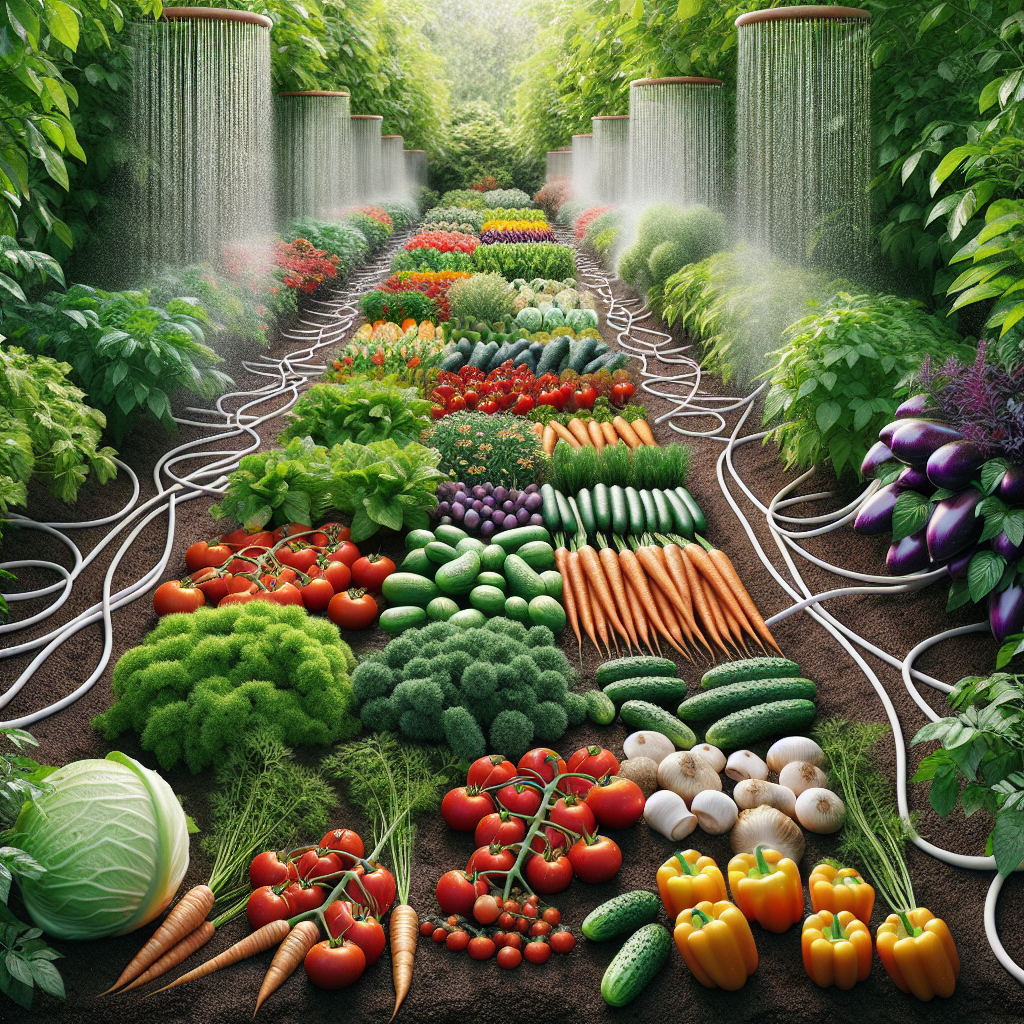Slow drip irrigation is a method of watering plants that involves delivering water directly to the roots of the plants at a slow and steady rate. This method has been gaining popularity in recent years, especially among vegetable gardeners, as it offers several advantages over other forms of irrigation. In this article, we will discuss the benefits of using slow drip irrigation in your vegetable garden.
1. Conserves Water: One of the biggest advantages of using slow drip irrigation in your vegetable garden is that it helps to conserve water. Unlike traditional sprinkler systems that can waste water through evaporation and runoff, slow drip irrigation delivers water directly to the roots of the plants where it is needed most. This not only helps to reduce water waste but also ensures that your plants are receiving the optimal amount of water they need to thrive.
2. Prevents Soil Erosion: Another benefit of using slow drip irrigation is that it helps to prevent soil erosion. When water is applied too quickly or forcefully, it can cause soil particles to wash away, leading to erosion issues. Slow drip irrigation delivers water gently and evenly to the root zone, minimizing the risk of soil erosion and preserving the health and structure of your soil.
3. Reduces Weeds: Weeds thrive in moist environments, so by watering your vegetable garden with a slow drip system, you can help to reduce weed growth. Unlike overhead watering methods which can inadvertently encourage weed growth by spreading seeds or promoting shallow root systems, slow drip irrigation targets only the plants you want to grow, minimizing weed competition for nutrients and moisture.
4. Promotes Healthy Plants: Slow drip irrigation allows for deep watering, ensuring that plant roots have access to a consistent supply of moisture even during hot and dry periods. This promotes stronger root development and healthier plants overall. Additionally, by watering at the root zone rather than on foliage, you can reduce the risk of fungal diseases associated with wet leaves.
5. Saves Time and Effort: Once installed, a slow drip system requires minimal maintenance compared to other forms of irrigation such as hand-watering or sprinklers. By automating your watering schedule with a timer or controller, you can save time and effort while ensuring that your plants receive consistent moisture throughout the growing season.
6. Customizable and Versatile: Slow drip systems are highly customizable and versatile, allowing you to tailor your watering schedule based on individual plant needs or environmental conditions. You can adjust flow rates, emitter placement, and scheduling to accommodate different types of vegetables in your garden or respond to changing weather patterns.
7. Environmentally Friendly: Slow drip irrigation is an environmentally friendly option for watering your vegetable garden because it helps conserve water resources while minimizing runoff and pollution from fertilizers or pesticides. By using a slow drip system, you can reduce your carbon footprint while maintaining a healthy and productive garden.
In conclusion, there are many advantages to using slow drip irrigation in your vegetable garden. From conserving water and preventing soil erosion to promoting healthy plants and reducing weeds, this method offers numerous benefits for both gardeners and the environment. If you’re looking for an efficient and effective way to water your vegetable garden while saving time and effort in the process, consider installing a slow drip system today!













